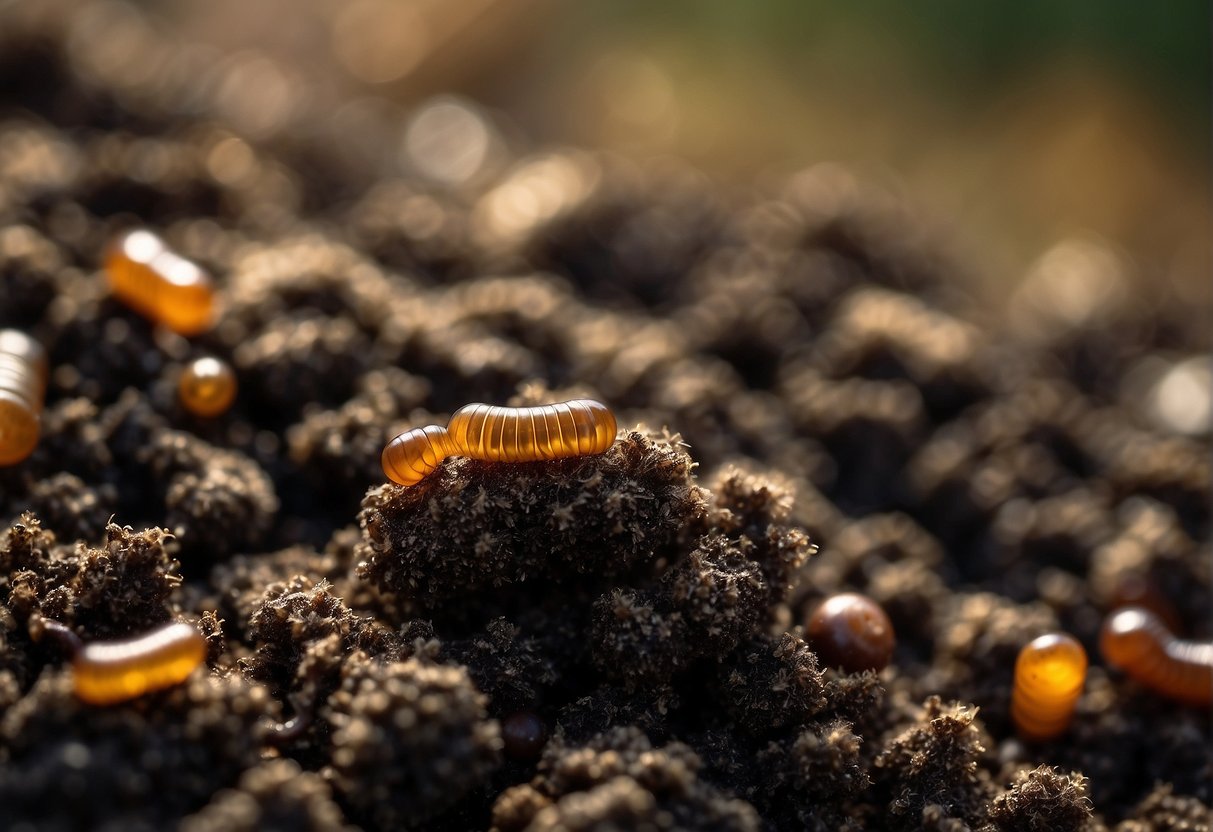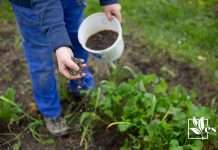As a gardener, I often get asked about what worm poop, also known as worm castings, looks like. Worm castings resemble soil but are actually the end-product of the breakdown of organic matter by earthworms. These castings are a dark, crumbly substance that are often found near the surface of soil where worms deposit them. Recognizing worm castings in your garden is a sign of healthy soil life and indicates that your soil is being enriched with essential nutrients.

Worm castings are not only an indicator of productive soil activity; they also offer a multitude of benefits to your garden. They improve soil structure, enhance water retention, and provide plants with a slow-release source of essential minerals and nutrients. Due to their organic nature, worm castings are a preferred choice for gardeners who practice sustainable and organic gardening methods. Employing this natural fertilizer promotes plant growth and health without the need for chemical inputs, which can be harmful to the beneficial organisms residing in your garden.
Integrating worm castings into your soil care regimen is straightforward. You can mix them into your potting soil, sprinkle them on the soil surface around your plants, or even brew them into a liquid fertilizer known as worm tea. This approach aligns with my commitment to ecological gardening and the creation of a thriving ecosystem within my garden beds. It’s a simple yet effective way to contribute to the health and productivity of my garden while supporting a more sustainable form of agriculture.
JUMP TO TOPIC
Identifying Common Symptoms and Causes
In my experience with parasitic infections, observing specific symptoms in combination with stool examination is crucial for identifying an infestation.
Recognizing the Signs of an Infection
It’s important to monitor for physical signs that often accompany intestinal worms. Symptoms may vary, but common indicators include:
- Abdominal pain: Cramping or tenderness may be present.
- Diarrhea or constipation: Frequent or irregular bowel movements can occur.
- Nausea or vomiting: These are common responses to parasites.
- Gas and bloating: Excessive gas might be a sign of worms.
- Itching around the anus: This particular symptom is often associated with pinworms.
- Visible worms in stool: Sometimes, worms or fragments may be evident in feces.
- Weight loss: Unexplained weight loss can occur despite normal eating habits.
- Appetite changes: Increased or decreased appetite may be a sign.
Understanding the Role of Parasites
Intestinal worms, such as roundworms, tapeworms, pinworms, and hookworms, are parasites that can infect the human gut. These organisms live and reproduce within the host’s body, often leading to the symptoms I described above. The most common causes of infection include:
- Contaminated food: Consuming undercooked meat or contaminated vegetables and fruits can lead to infection.
- Poor hygiene: Inadequate washing of hands, especially after using the bathroom or before eating, increases the risk.
- Contaminated water: Drinking or swimming in water that contains parasites can result in ingestion.
- Soil contact: Certain worms can penetrate the skin when an individual comes into contact with infested soil.
Diagnostic Procedures and Effective Treatments
In the diagnosis and treatment of tapeworm infections, it’s crucial to accurately detect the presence of parasites and to administer effective medication to eliminate them from the body.
When I suspect a tapeworm infection, I start with asking for a stool sample to detect the presence of eggs or segments of the tapeworm.
The tape test might be used to diagnose certain types of infections, such as pinworms. If the stool samples aren’t conclusive, blood tests can help identify specific antigens related to tapeworm infection. For a more detailed view, imaging exams like CT or MRI can reveal cysts in tissues, indicating a larval cyst infection. These diagnostic tools, when used effectively, can pinpoint the type of worm and guide my treatment approach.
Advancements in Treatment Options
After diagnosing a tapeworm infection, I prescribe medication that’s proven effective. The drugs of choice are typically:
- Albendazole and Praziquantel, which work to paralyze and eliminate the tapeworms from the gut. In the case of more extensive infections, such as cysts in organs, I’ve seen these medications dramatically reduce the burden of the parasites.
| Common Medications for Tapeworm Infections | |
|---|---|
| Albendazole | Interrupts the worm’s glucose absorption |
| Praziquantel | Causes severe spasms and paralysis in the worm |
| Biltricide | A brand name for Praziquantel |
It’s important to follow the prescribed treatment plan and dosage, as it varies based on the type of tapeworm and severity of the infection. Monitoring for signs of inflammation and recovery is part of the process, and in some cases, a follow-up stool sample or imaging may be required to confirm that the infection has been cleared.
Preventing Intestinal Parasite Infections
Intestinal parasites pose a significant threat to human health, but with proper preventive measures focusing on hygiene and safe consumption practices, the risk of infections can be effectively reduced. Here’s how I ensure that I am not at risk.
Adopting Hygienic Practices
Keeping good hygiene is crucial in preventing the spread of parasites. I always wash my hands thoroughly with soap and hot water especially after using the restroom, changing diapers, and before handling food. Regular sanitation of surfaces in the kitchen and bathroom is a must, as these areas can harbor parasite eggs. It’s also important to launder bedding and underclothes regularly, and I make sure to use hot water to do so.
💥 Hand Hygiene: The First Line of Defense
Ensuring Safe Consumption of Food and Water
Making wise choices about what I eat and drink is critical to avoiding parasites. I take special care to cook meat thoroughly to kill any parasites that may be present. For this purpose, I use a food thermometer to make sure that cooked meat has reached the safe internal temperature.
For raw fruits and vegetables, I follow a strict cleaning routine. I wash them under clean, running water and often use a brush to remove any residue. If I’m in a place with questionable water sanitation, I opt for bottled or boiled water, and I avoid ice cubes, which may have been made from contaminated water sources.
| Food Type | Preparation Method |
|---|---|
| Meat | Cook to recommended internal temperatures |
| Fruits & Vegetables | Wash thoroughly with clean, running water |
| Water | Choose bottled or boiled water if safety is uncertain |
By adhering to these practices, I take active steps to reduce the likelihood of intestinal parasite infections for myself and those around me.












